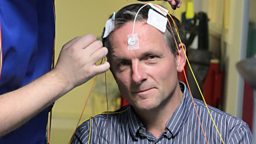Could bionic eyes help the blind to see again?
Surgeon visits the John Radcliffe Hospital in Oxford to follow an NHS funded trial testing a ground-breaking new treatment for patients who have lost their sight.

Retinitis Pigmentosa is an inherited eye disorder that damages the light sensitive cells, or photoreceptors, at the back of the retina causing patients to gradually lose their vision. There is no cure for this disease but a pioneering new technology is now offering a solution. At the Oxford Eye Hospital doctors have selected 6 patients to receive the most advanced kind of retinal implant – a tiny electronic chip that is inserted into the eye to replace the damaged photoreceptors and restore elements of vision. It acts a little like a camera, but sends its electrical signals to the brain, rather than to an electronic screen.
It is not like most people imagine – that as soon as the device is switched on, the patient can instantly see again. It takes time for their brain to learn to interpret the electrical signals that the implant provides, particularly because for most of these patients the parts of the brain responsible for interpreting vision have been lying dormant for so long. It’s quite extraordinary that an electronic device can send signals to the brain that can be interpreted as images at all!
Once the chip has been implanted, patients need to return to the hospital every few weeks for regular testing. When the device is first switched on they will probably see flashes of light, but over time the brain will convert those flashes into meaningful shapes and objects to build up an image. This image, even from these most advanced chips, will be black and white and grainy, rather like early television pictures, but for patients who have spent years without any sight at all this improvement can be life changing.
The surgery to implant this device is being carried out by Prof Robert MacLaren and each procedure usually takes around 8 hours. This is because positioning the chip is an extremely delicate and complex process in which precision is vital – if it isn’t implanted in exactly the right place it could damage the optic nerve and meaningful vision might not be achieved. The implant itself is called the Alpha IMS and is made in Germany. It is a 3x32mm wireless microchip which captures the light entering the eye and stimulates the optic nerve to deliver signals to the brain. A power supply for the device is implanted behind the ear and patients can adjust the gain and frequency to obtain the best possible signal for different conditions.
If this trial is a success it’s possible that this implant could be made available on the NHS. Doctors also hope that one day this technology can be applied to other eye diseases such as age related macular degeneration.




























































